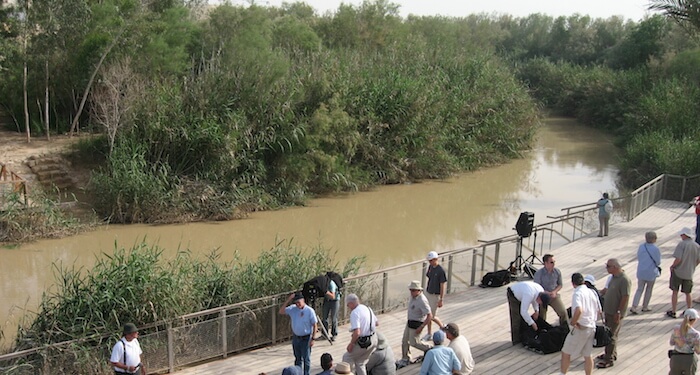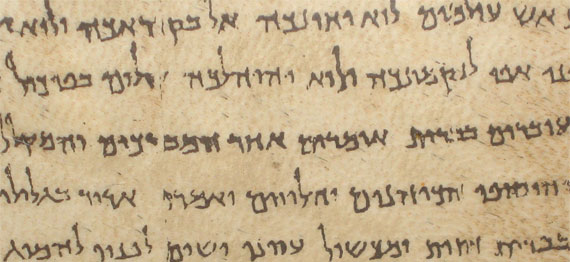Today we descended from Jerusalem into the warmer Jordan Valley. In fact, it’s the lowest elevation on the planet! We began with a worship service beside the Jordan River, the very site where tradition says Jesus was baptized.

(Photo: Jordan River baptism site, where Jesus was baptized)
On the west shore of the Dead Sea, we toured several places:
- Masada—where first-century Jewish patriots committed suicide rather than surrender to Rome.
- Ein Gedi—where a young David hid from a jealous King Saul (1 Sam. 23:29; 24:1).
- Several brave souls chose to float in the Dead Sea, but once was enough for me!
And we toured Qumran—by far the most “boring” site of the three . . . and yet its significance for the Bible stands far above the others.
The Significance of the Dead Sea Scrolls
Prior to the discovery of the Dead Sea Scrolls at Qumran, scholars despaired of ever finding Hebrew manuscripts that predated our oldest copies, which were from the tenth century AD (that’s 900 years after Jesus). But the Dead Sea Scrolls dated from the second century before Christ—and thus, backed up our understanding of the Hebrew Bible by about one thousand years!

(Photo: A portion of the Dead Sea Scrolls)
In a volume published not long before the discovery, Frederic G. Kenyon wrote despairingly, “There is, indeed, no probability that we shall ever find manuscripts of the Hebrew text going back to a period before the formation of the text which we know as Massoretic. We can only arrive at an idea of it by a study of the earliest translations made from it.” Only eight years later, the Dead Sea Scrolls were discovered.
Hopeless, then God Steps In
Isn’t this often how we view life? Utterly hopeless, and then God steps in.
Any one of us could have written something similar to Kenyon’s quote. Situations and conditions often seem hopeless—most often, actually. Outcomes and attitudes will appear unchangeable and literally demand we doubt God’s Word. God verifies the reliability of Scripture by many means, including resurrecting ancient manuscripts from the caves of Qumran and raising His Son from the cave that was His tomb.
But the task of living His Word, God gives as our responsibility.
Continue Your Tour!
Learn more about each of these sites we saw, including devotionals for each one, by exploring these links:
- The Jordan River—Your Place of Transition
- Ein Gedi—A Testimony to God’s Grace and Provision
- Finding the Dead Sea Scrolls Isn’t Enough
- Masada— A Place of Sanctuary, Suicide, and Inspiration
- The Dead Sea Will Live Again
- How Do We Know What Books Go in Our Old Testament?
See My Pictures from the Tour—and on the Map!
Check out my pictures of our tour. I’m adding to the collection daily, so be sure and check each day’s post. Click the locations on the map below to see pictures from that site.
(Can’t see my pics? Just click here and select a post.)
